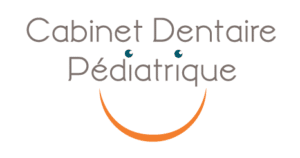Tartar and plaque can be confused, but they are not the same thing. Both have consequences on the teeth, and this, from childhood, hence the importance of preventing their appearance.
Find out what tartar is, what its effects are and how to prevent tartar on children's teeth.
Difference between tartar and plaque
Plaque is a bacterial deposit that accumulates on the teeth and between the teeth and gums. This plaque is composed of saliva, food and liquids.
Plaque bacteria produce acids that attack enamel and can lead to cavities.
Tartar is a yellowish or brown deposit that appears when plaque mineralizes on the teeth.
While plaque can be removed by careful brushing, only a dentist can remove tartar.
Tartar on baby teeth: is it possible?
As soon as baby teeth appear, it is important to take care of the oral hygiene of the little ones.
Tartar can build up as early as two years of age. It is a mistake to consider baby teeth as harmless, since they have an effect on permanent teeth.
Therefore, contrary to popular belief, baby teeth can and should also be scaled to prevent tartar damage.
Effects and risks of tartar on baby teeth
Tartar can sometimes appear as a dark line on the tooth, a thin black line or black spots. This is actually a bacterium ("melaninogenic bacteria" or chromogenic bacteria) that develops in areas not exposed to chewing.
In addition to being unsightly, tartar reduces the protective layer of the teeth, which encourages the development of infections and cavities.
The first infections usually affect the gums. In addition to gingivitis, bleeding may occur.
How to remove tartar from children's teeth?
The best thing to do is to make an appointment with your dentist. He will be able to see the tartar and proceed with the scaling.
The course of the session
In practice, the dentist uses a polisher in addition to a professional prophylactic paste containing fluoride and pumice.
This procedure removes plaque, bacteria and stains.
Smoothing the tooth makes it much more difficult for tartar to adhere later on.
Finally, a curette is used to scrape the surface of the teeth and remove tartar. A scaler can also be used. This is an electric ultrasonic device that will remove tartar by applying strong water pressure to the tooth.
Preparing the child for scaling
It is always important to prepare the child before a dental procedure. To do this, you can :
- Explain the gestures that will be performed,
- Reassure him/her that there is no pain,
- Tell him he'll come out with all white teeth.
Preventing tartar on children's teeth
When it comes to health, nothing beats prevention and teeth are no exception.
Thus, it is important to prevent tartar by regular brushing of teeth and gums, twice a day for the smallest.
Use a soft toothbrush and age-appropriate toothpaste with fluoride.


